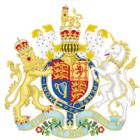Welsh Language Act 1967 facts for kids

|
|
| Long title | An Act to make further provision with respect to the Welsh language and references in Acts of Parliament to Wales. |
|---|---|
| Citation | 1967 c.66 |
| Territorial extent | England and Wales; Scotland; Northern Ireland |
| Dates | |
| Royal assent | 27 July 1967 |
| Other legislation | |
| Repealed by | Welsh Language Act 1993 |
|
Status: Repealed
|
|
The Welsh Language Act 1967 (Welsh: Deddf Yr Iaith Gymraeg 1967) was a law made by the Parliament of the United Kingdom. This law gave people some rights to use the Welsh language in court cases and other official matters in Wales. This included the area of Monmouthshire.
The Act also allowed government officials to create Welsh versions of important documents. A key part of this law was that it cancelled an older rule from 1746. This old rule had said that "England" included Wales.
This law was passed in July 1967. It was based on a report from 1965 and the hard work of groups like the Welsh Language Society. It also came from members of a political party called Plaid Cymru. Even so, some people felt the law did not go far enough.
The 1967 Act was the first law to really improve the rights to use Welsh in legal settings. It started to remove a ban on the language that had been in place since the 1500s. Before this, only English was allowed in courts and public offices.
The Welsh Language Act 1967 was later replaced by the Welsh Language Act 1993.
Contents
What the Act Changed
The Welsh Language Act 1967 made it possible to use the Welsh language in court cases in Wales. Before this, using Welsh in courts had been banned for hundreds of years. The law also let government ministers approve Welsh translations of any documents needed for legal reasons.
Even though the Act gave Welsh equal importance, it did not give it "official status." This means it was treated the same as English, but it wasn't officially declared the national language.
Defining Wales
The Act also cancelled a part of an older law, the Wales and Berwick Act 1746. This old law had said that "England" included Wales. By removing this, the 1967 Act helped to make Wales legally separate.
Later, the exact area of Wales was defined by its counties in a 1972 law. Even when the counties were changed in 1994, the legal definition of Wales stayed the same.
How the Act Came About
The Welsh Language Act 1967 was partly based on the Hughes Parry Report from 1965. This report suggested that Welsh and English should be equally important in Welsh courts. This included both spoken and written language.
Language History in Wales
For a long time, laws from the 1500s (the Laws in Wales Acts 1535-1542) made English the only language allowed in Welsh courts. It was also the only language for other public services. This was a problem because most people in Wales in the 1500s and 1600s spoke Welsh. Only a few could understand English well.
Things started to change during the time of factories and new industries in Wales. This period made it harder for people to use Welsh, which was their natural language.
Steps Towards Change
The Welsh Courts Act 1942 was the first law since the 1500s to allow some use of Welsh in court. However, you could only use Welsh if you could prove that using English would be a problem. It also depended on finding a judge who spoke Welsh fluently.
The 1967 Act was the first law to truly remove these limits on the Welsh language. It was a direct response to campaigns by members of Plaid Cymru and the Welsh Language Society.
Some people who wanted more rights for the Welsh language were not happy with the 1967 Act. They felt it wasn't strong enough. This led to some protests, including painting over English signs.
The 1967 Act was later replaced by the Welsh Language Act 1993. The 1993 Act made sure Welsh and English were treated equally in "public business and the administration of justice in Wales."
See also

